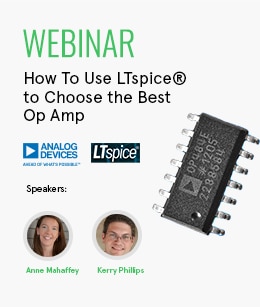Clem likes working with metal, but it takes longer to set up the bender and clamp the workpiece than actually doing productive work with it. And it is usually much bigger than it needs to be! Just having it automatically clamp the workpiece would make things a lot faster! So Clem builds a semi-automatic machine that knows when it has correctly clamped the workpiece! He uses a Trinamic TMC2130 stepper driver and an Arduino Nano and explains sensorless homing on the way!
Gearbox mentioned in the episode
Bill of Material:
| Product Name | Manufacturer | Quantity | Buy Kit |
|---|---|---|---|
| Arduino Nano | ARDUINO | 1 | Buy Now |
| TRINAMIC Evaluation Board, TMC2130 Bipolar Stepper Motor Driver Board, StealthChop, SPI | TRINAMIC | 2 | Buy Now |
| NANOTEC Stepper Motor, High Torque, DC, 0.28 N-m, 1.8 A, Two Phase, 1.1 ohm, 1.85 mH | Nanotec | 2 | Buy Now |
| XP POWER AC/DC Power Supply, ITE, 2 Output, 42 W, 5 V, 5 A, 12 V | XP-Power | 1 | Buy Now |
| DELTRON COMPONENTS DIN Audio / Video Connector, Screened, 180°, 5 Contacts, Jack, Panel Mount, Solder | DELTRON | 1 | Buy Now |
| ITW SWITCHES Pushbutton Switch, Industrial, 59 Series, 13.6 mm, SPST-NO-DB, Momentary, Round | ITW | 1 | Buy Now |
| ITW SWITCHES Pushbutton Switch, Industrial, 59 Series, 13.6 mm, SPST-NO-DB, Momentary, Round | ITW | 1 | Buy Now |
| DURATOOL Studding, Threaded, Stainless Steel, M10, 1mm Pitch, 1m Length | Duratool | 1 | Buy Now |
| K&S BRASS STRIP, 0.032" X 1/2" X 12" | K&S | 1 | Buy Now |
| RUBYCON Electrolytic Capacitor, Miniature, 100 µF, 100 V, YXF Series, ± 20%, Radial Leaded, 12.5 mm | Rubycon | 2 | Buy Now |
| TR FASTENINGS Flange Nut, Serrated, M10, Steel, Bright Zinc Plating, 50 Pack | TR Fastenings | 4 | Buy Now |
DIY Arduino Automated Metal Bending Machine



Top Comments
-

celcius1
-
Cancel
-
Vote Up
+2
Vote Down
-
-
Sign in to reply
-
More
-
Cancel
-

mayermakes
in reply to celcius1
-
Cancel
-
Vote Up
+2
Vote Down
-
-
Sign in to reply
-
More
-
Cancel
-

celcius1
in reply to mayermakes
-
Cancel
-
Vote Up
+2
Vote Down
-
-
Sign in to reply
-
More
-
Cancel
-

mayermakes
in reply to celcius1
-
Cancel
-
Vote Up
+1
Vote Down
-
-
Sign in to reply
-
More
-
Cancel
Comment-

mayermakes
in reply to celcius1
-
Cancel
-
Vote Up
+1
Vote Down
-
-
Sign in to reply
-
More
-
Cancel
Children